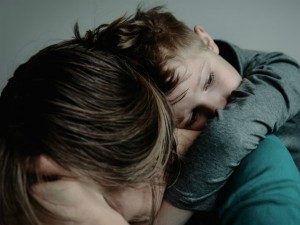
Using these videos in your learning helps you meet point 1 of the Knowledge and skills statement for child and family practitioners: Relationships and direct work. The content can also help you with point 4: Adult mental ill health, substance misuse, domestic abuse, physical ill health and disability.
Introduction
These videos, produced in a collaboration between Community Care Inform, the University of Bedfordshire and Islington children’s services, are designed to present examples of different approaches to direct practice with parents and children in four different scenarios. Like many children’s services departments in recent years, Islington has been increasingly focused on the importance of practice and of providing a strengths-based and collaborative service.
Several large-scale research projects in recent years (from the University of Bedfordshire and Cardiff University) have also focused on the importance of practice. These include family safeguarding in Hertfordshire (Forrester et al, 2017), Reclaiming Social Work (Bostock, 2017) and the Islington ‘Doing What Counts, Measuring What Matters’ project (Luckock, 2017). These projects have between them involved the observation of many hundreds of encounters between social workers, parents and children, revealing an enormous amount of complexity. Yet it is also clear that some of these conversations are more collaborative, more empathic and more helpful than others (Forrester et al, 2018). This matters for at least two reasons. First, all parents and children deserve to be treated with respect, irrespective of their circumstances, and particularly when they have no meaningful choice but to work with social services. And second, as is starting to be revealed through the work of Professor Donald Forrester, there is a relationship between social work practice skills and outcomes for families (particularly when having a more positive experience of the service is properly understand as an outcome in its own right) (Forrester et al, 2007). Nevertheless, there are also all sorts of contextual factors that need to be considered as well. For example, training by itself is unlikely to be the best solution for improving practice skills (Forrester et al, 2018). We also need to ask how well the worker is supported, whether they have access to reasonable resources, what sort of supervision they receive and whether they have a manageable caseload.
The aim of these videos is to demonstrate some broadly different approaches to having conversations with parents and young people. For each scenario, in the first video, which we have labelled ‘less skilled’, the social worker seems more concerned with giving information and persuading the parent or young person to change by giving advice. In the second video, which we have labelled ‘more skilled’, the social worker spends more time listening and demonstrates greater empathy, while at the same time still engaging in difficult conversations. We do not mean to suggest that either approach is flawless or completely misguided, nor that workers consistently behave in one or other of these ways – social work is much more complicated than that (Wilkins and Whittaker, 2018).
The scenarios were written by John McDonnell, social work practice coach at Islington Children’s Services and David Wilkins. They are all composite examples of common encounters between social workers, young people and families observed in the ‘Doing What Counts: Measuring What Matters’ project and the wider practice experience of the team. The people in the videos are mainly Islington social workers, with actors playing the suspected perpetrator and victim of domestic abuse. The introduction above is by David Wilkins.
References
- Bostock, L; Forrester, D; Patrizo, L; Godfrey, T; Zonouzi, N; Antonopoulou, V; Bird, H and Tinarwo, M (2017)
Scaling and deepening the Reclaiming Social Work model Evaluation report
Department for Education - Forrester, D; Kershaw, S; Moss, H and Hughes, L (2007)
‘Communication skills in child protection: how do social workers talk to parents?‘
Child and Family Social Work, Volume 13, Issue 1, pp41-51 - Forrester, D; Lynch, A; Bostock, L; Newlands, F; Preston, B and Cary, A (2017)
Family Safeguarding Hertfordshire Evaluation Report
Department for Education - Forrester, D; Westlake, D; Killian, M; Antonopoulou, V; McCann, M; Thurnham, A; Thomas, R; Waits, C; Whittaker, C; Hutchinson, D (2018)
‘A randomized controlled trial of training in Motivational Interviewing for child protection’
Children and Youth Services Review, Volume 88, pp180-190 - Luckock, B; Hickle, K; Hampden-Thomson, G; Dickens, R (2017)
The Islington ‘Doing What Counts: Measuring What Matters’ Evaluation Report
Department for Education - Wilkins, D and Whittaker, C (2018)
‘Doing Child-Protection Social Work with Parents: What Are the Barriers in Practice?‘
The British Journal of Social Work, Volume 48, Issue 7, pp2003–2019
Questions to consider for each scenario
- How might the parent or young person experience the session differently each time?
- How much time in each video does the social worker spend listening compared to how much time they spend talking? How significant do you think this is?
- What do you notice about the social worker’s use of open questions and reflective listening statements in the more skilled examples? What is the impact of using more open questions and reflective statements?
- How well does the social worker balance the need to engage and build a relationship with the need to remain purposeful and to keep the child’s safety and well-being in mind?

 Knowledge and Practice Hubs
Knowledge and Practice Hubs 



